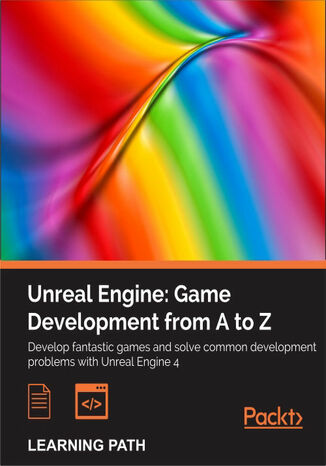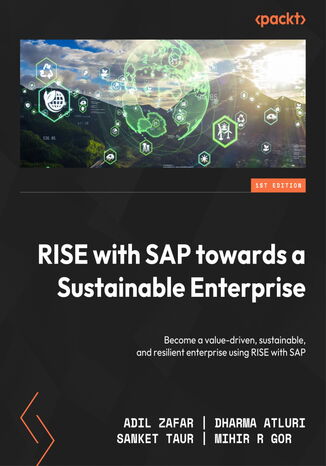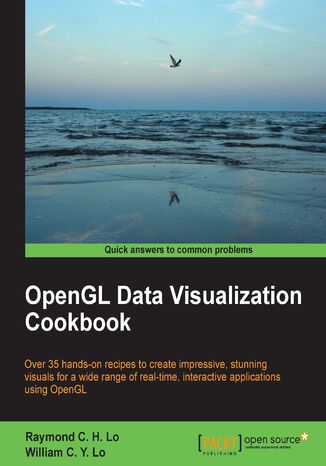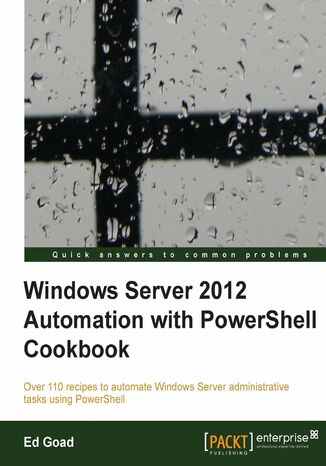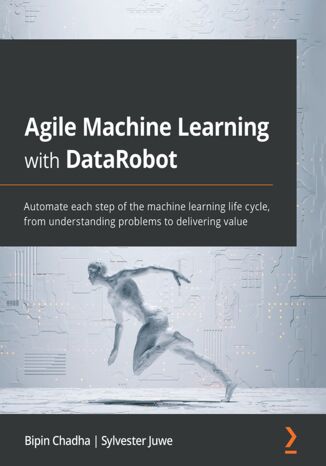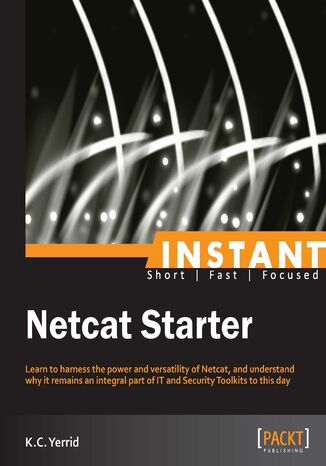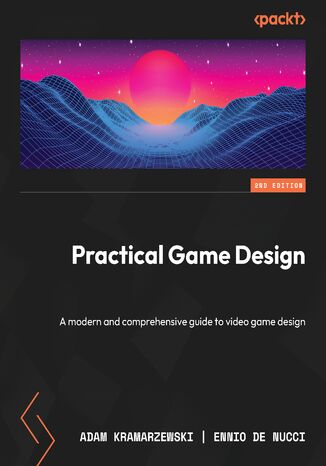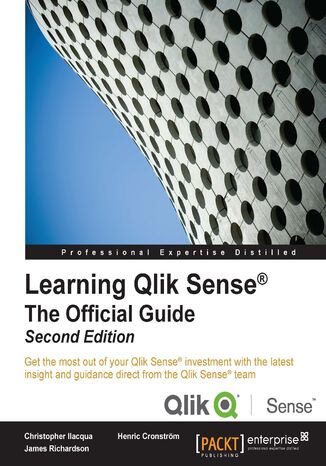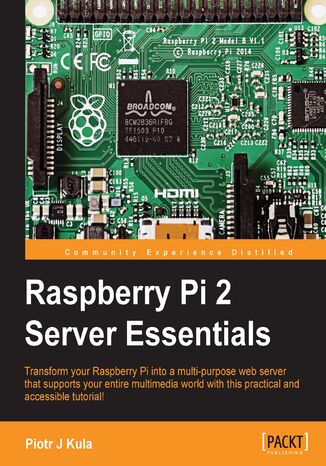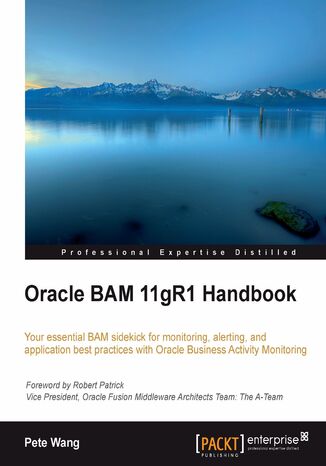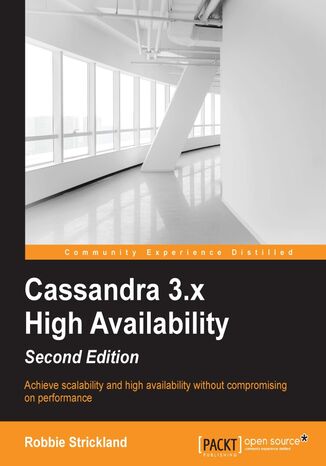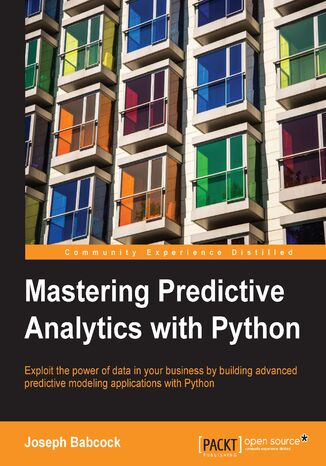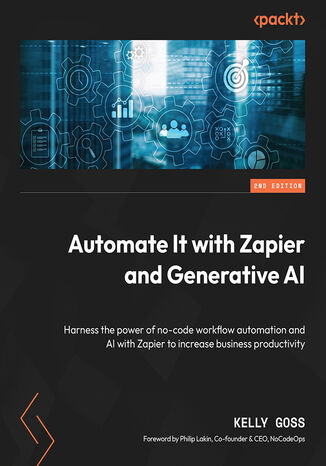Categories
Ebooks
-
Business and economy
- Bitcoin
- Businesswoman
- Coaching
- Controlling
- E-business
- Economy
- Finances
- Stocks and investments
- Personal competence
- Computer in the office
- Communication and negotiation
- Small company
- Marketing
- Motivation
- Multimedia trainings
- Real estate
- Persuasion and NLP
- Taxes
- Social policy
- Guides
- Presentations
- Leadership
- Public Relation
- Reports, analyses
- Secret
- Social Media
- Sales
- Start-up
- Your career
- Management
- Project management
- Human Resources
-
For children
-
For youth
-
Education
-
Encyclopedias, dictionaries
-
E-press
- Architektura i wnętrza
- Health and Safety
- Biznes i Ekonomia
- Home and garden
- E-business
- Ekonomia i finanse
- Esoterecism
- Finances
- Personal finance
- Business
- Photography
- Computer science
- HR & Payroll
- For women
- Computers, Excel
- Accounts
- Culture and literature
- Scientific and academic
- Environmental protection
- Opinion-forming
- Education
- Taxes
- Travelling
- Psychology
- Religion
- Agriculture
- Book and press market
- Transport and Spedition
- Healthand beauty
-
History
-
Computer science
- Office applications
- Data bases
- Bioinformatics
- IT business
- CAD/CAM
- Digital Lifestyle
- DTP
- Electronics
- Digital photography
- Computer graphics
- Games
- Hacking
- Hardware
- IT w ekonomii
- Scientific software package
- School textbooks
- Computer basics
- Programming
- Mobile programming
- Internet servers
- Computer networks
- Start-up
- Operational systems
- Artificial intelligence
- Technology for children
- Webmastering
-
Other
-
Foreign languages
-
Culture and art
-
School reading books
-
Literature
- Antology
- Ballade
- Biographies and autobiographies
- For adults
- Dramas
- Diaries, memoirs, letters
- Epic, epopee
- Essay
- Fantasy and science fiction
- Feuilletons
- Work of fiction
- Humour and satire
- Other
- Classical
- Crime fiction
- Non-fiction
- Fiction
- Mity i legendy
- Nobelists
- Novellas
- Moral
- Okultyzm i magia
- Short stories
- Memoirs
- Travelling
- Narrative poetry
- Poetry
- Politics
- Popular science
- Novel
- Historical novel
- Prose
- Adventure
- Journalism, publicism
- Reportage novels
- Romans i literatura obyczajowa
- Sensational
- Thriller, Horror
- Interviews and memoirs
-
Natural sciences
-
Social sciences
-
School textbooks
-
Popular science and academic
- Archeology
- Bibliotekoznawstwo
- Cinema studies
- Philology
- Polish philology
- Philosophy
- Finanse i bankowość
- Geography
- Economy
- Trade. World economy
- History and archeology
- History of art and architecture
- Cultural studies
- Linguistics
- Literary studies
- Logistics
- Maths
- Medicine
- Humanities
- Pedagogy
- Educational aids
- Popular science
- Other
- Psychology
- Sociology
- Theatre studies
- Theology
- Economic theories and teachings
- Transport i spedycja
- Physical education
- Zarządzanie i marketing
-
Guides
-
Game guides
-
Professional and specialist guides
-
Law
- Health and Safety
- History
- Road Code. Driving license
- Law studies
- Healthcare
- General. Compendium of knowledge
- Academic textbooks
- Other
- Construction and local law
- Civil law
- Financial law
- Economic law
- Economic and trade law
- Criminal law
- Criminal law. Criminal offenses. Criminology
- International law
- International law
- Health care law
- Educational law
- Tax law
- Labor and social security law
- Public, constitutional and administrative law
- Family and Guardianship Code
- agricultural law
- Social law, labour law
- European Union law
- Industry
- Agricultural and environmental
- Dictionaries and encyclopedia
- Public procurement
- Management
-
Tourist guides and travel
- Africa
- Albums
- Southern America
- North and Central America
- Australia, New Zealand, Oceania
- Austria
- Asia
- Balkans
- Middle East
- Bulgary
- China
- Croatia
- The Czech Republic
- Denmark
- Egipt
- Estonia
- Europe
- France
- Mountains
- Greece
- Spain
- Holand
- Iceland
- Lithuania
- Latvia
- Mapy, Plany miast, Atlasy
- Mini travel guides
- Germany
- Norway
- Active travelling
- Poland
- Portugal
- Other
- Przewodniki po hotelach i restauracjach
- Russia
- Romania
- Slovakia
- Slovenia
- Switzerland
- Sweden
- World
- Turkey
- Ukraine
- Hungary
- Great Britain
- Italy
-
Psychology
- Philosophy of life
- Kompetencje psychospołeczne
- Interpersonal communication
- Mindfulness
- General
- Persuasion and NLP
- Academic psychology
- Psychology of soul and mind
- Work psychology
- Relacje i związki
- Parenting and children psychology
- Problem solving
- Intellectual growth
- Secret
- Sexapeal
- Seduction
- Appearance and image
- Philosophy of life
-
Religion
-
Sport, fitness, diets
-
Technology and mechanics
Audiobooks
-
Business and economy
- Bitcoin
- Businesswoman
- Coaching
- Controlling
- E-business
- Economy
- Finances
- Stocks and investments
- Personal competence
- Communication and negotiation
- Small company
- Marketing
- Motivation
- Real estate
- Persuasion and NLP
- Taxes
- Social policy
- Guides
- Presentations
- Leadership
- Public Relation
- Secret
- Social Media
- Sales
- Start-up
- Your career
- Management
- Project management
- Human Resources
-
For children
-
For youth
-
Education
-
Encyclopedias, dictionaries
-
E-press
-
History
-
Computer science
-
Other
-
Foreign languages
-
Culture and art
-
School reading books
-
Literature
- Antology
- Ballade
- Biographies and autobiographies
- For adults
- Dramas
- Diaries, memoirs, letters
- Epic, epopee
- Essay
- Fantasy and science fiction
- Feuilletons
- Work of fiction
- Humour and satire
- Other
- Classical
- Crime fiction
- Non-fiction
- Fiction
- Mity i legendy
- Nobelists
- Novellas
- Moral
- Okultyzm i magia
- Short stories
- Memoirs
- Travelling
- Poetry
- Politics
- Popular science
- Novel
- Historical novel
- Prose
- Adventure
- Journalism, publicism
- Reportage novels
- Romans i literatura obyczajowa
- Sensational
- Thriller, Horror
- Interviews and memoirs
-
Natural sciences
-
Social sciences
-
Popular science and academic
-
Guides
-
Professional and specialist guides
-
Law
-
Tourist guides and travel
-
Psychology
- Philosophy of life
- Interpersonal communication
- Mindfulness
- General
- Persuasion and NLP
- Academic psychology
- Psychology of soul and mind
- Work psychology
- Relacje i związki
- Parenting and children psychology
- Problem solving
- Intellectual growth
- Secret
- Sexapeal
- Seduction
- Appearance and image
- Philosophy of life
-
Religion
-
Sport, fitness, diets
-
Technology and mechanics
Videocourses
-
Data bases
-
Big Data
-
Biznes, ekonomia i marketing
-
Cybersecurity
-
Data Science
-
DevOps
-
For children
-
Electronics
-
Graphics/Video/CAX
-
Games
-
Microsoft Office
-
Development tools
-
Programming
-
Personal growth
-
Computer networks
-
Operational systems
-
Software testing
-
Mobile devices
-
UX/UI
-
Web development
-
Management
Podcasts
Nitish Misra, John P. Doran, Joanna Lee
Unreal Engine technology powers hundreds of games. This Learning Path will help you create great 2D and 3D games that are distributed across multiple platforms.The first module, Learning Unreal Engine Game Development, starts with small, simple game ideas and playable projects. It starts by showing you the basics in the context of an individual game level. Then, you'll learn how to add details such as actors, animation, effects, and so on to the game. This module aims to equip you with the confidence and skills to design and build your own games using Unreal Engine 4. By the end of this module, you will be able to put into practise your own content.After getting familiar with Unreal Engine’s core concepts, it’s time that you dive into the field of game development. In this second module, Unreal Engine Game Development Cookbook we show you how to solve development problems using Unreal Engine, which you can work through as you build your own unique project. Every recipe provides step-by-step instructions, with explanations of how these features work, and alternative approaches and research materials so you can learn even more. You will start by building out levels for your game, followed by recipes to help you create environments, place meshes, and implement your characters. By the end of this module, you will see how to create a health bar and main menu, and then get your game ready to be deployed and published.The final step is to create your very own game that will keep mobile users hooked.This is what you'll be learning in our third module, Learning Unreal Engine Android Game Development,Once you get the hang of things, you will start developing our game, wherein you will graduate from movement and character control to AI and spawning. Once you've created your application, you will learn how to port and publish your game to the Google Play Store.With this course, you will be inspired to come up with your own great ideas for your future game development projects.
Adil Zafar, Dharma Alturi, Sanket Taur, Mihir R. Gor
If you’re unsure whether adopting SAP S/4HANA is the right move for your enterprise, then this book is for you. This practical and comprehensive guide will help you determine your next steps toward building a business case, while preparing you for all the possible scenarios and enabling you to make informed decisions during implementation. RISEwith SAP toward a Sustainable Enterprise is packed with clear and detailed advice, including a run-through of what it takes to design the landscape using RISE with SAP. As you go through the chapters, you’ll get a solid understanding of precisely what services are available (such as Process Discovery, data migration, the fit-to-standard approach), and which scope items on RISE with SAP should be considered, allowing you to make the most of RISE with the SAP-based model. Finally, you’ll get an overview of different industry-based use cases and how they can be brought to reality with the platform that’s set up on the RISE with SAP offering. By the end of this book, you’ll be able to build a detailed business case to determine if RISE with SAP is the right transformation engine for you, along with a clear idea of optimized landscape design on RISE with SAP that addresses the pain points for your implementation and support activities.
William Lo, Raymond Chun Hing Lo
OpenGL is a great multi-platform, cross-language, and hardware-accelerated graphics interface for visualizing large 2D and 3D datasets. Data visualization has become increasingly challenging using conventional approaches as datasets become larger and larger, especially with the Big Data evolution. From a mobile device to a sophisticated high-performance computing cluster, OpenGL libraries provide developers with an easy-to-use interface to create stunning visuals in 3D in real time for a wide range of interactive applications.This book provides a series of easy-to-follow, hands-on tutorials to create appealing OpenGL-based visualization tools with minimal development time. We will first illustrate how to quickly set up the development environment in Windows, Mac OS X, and Linux. Next, we will demonstrate how to visualize data for a wide range of applications using OpenGL, starting from simple 2D datasets to increasingly complex 3D datasets with more advanced techniques. Each chapter addresses different visualization problems encountered in real life and introduces the relevant OpenGL features and libraries in a modular fashion.By the end of this book, you will be equipped with the essential skills to develop a wide range of impressive OpenGL-based applications for your unique data visualization needs, on platforms ranging from conventional computers to the latest mobile/wearable devices.
Automating server tasks allows administrators to repeatedly perform the same, or similar, tasks over and over again. With PowerShell scripts, you can automate server tasks and reduce manual input, allowing you to focus on more important tasks. Windows Server 2012 Automation with PowerShell Cookbook will show several ways for a Windows administrator to automate and streamline his/her job. Learn how to automate server tasks to ease your day-to-day operations, generate performance and configuration reports, and troubleshoot and resolve critical problems. Windows Server 2012 Automation with PowerShell Cookbook will introduce you to the advantages of using Windows Server 2012 and PowerShell. Each recipe is a building block that can easily be combined to provide larger and more useful scripts to automate your systems. The recipes are packed with examples and real world experience to make the job of managing and administrating Windows servers easier. The book begins with automation of common Windows Networking components such as AD, DHCP, DNS, and PKI, managing Hyper-V, and backing up the server environment. By the end of the book you will be able to use PowerShell scripts to automate tasks such as performance monitoring, reporting, analyzing the environment to match best practices, and troubleshooting.
DataRobot enables data science teams to become more efficient and productive. This book helps you to address machine learning (ML) challenges with DataRobot's enterprise platform, enabling you to extract business value from data and rapidly create commercial impact for your organization.You'll begin by learning how to use DataRobot's features to perform data prep and cleansing tasks automatically. The book then covers best practices for building and deploying ML models, along with challenges faced while scaling them to handle complex business problems. Moving on, you'll perform exploratory data analysis (EDA) tasks to prepare your data to build ML models and ways to interpret results. You'll also discover how to analyze the model's predictions and turn them into actionable insights for business users. Next, you'll create model documentation for internal as well as compliance purposes and learn how the model gets deployed as an API. In addition, you'll find out how to operationalize and monitor the model's performance. Finally, you'll work with examples on time series forecasting, NLP, image processing, MLOps, and more using advanced DataRobot capabilities.By the end of this book, you'll have learned to use DataRobot's AutoML and MLOps features to scale ML model building by avoiding repetitive tasks and common errors.
K.C. Yerrid, Kenneth Curtis Yerrid
As a featured networking utility, Netcat uses TCP/IP protocols to read and write data across network connections. Netcat is a feature rich backend network debugging and exploration tool with the ability to create almost any type of connection you would need. Instant Netcat Starter is a practical, hands-on guide that provides you with a simple and straightforward roadmap to proceed from newbie to seasoned professional with the Netcat utility. By progressing from simple to more complex uses, this book will inform and explain many of the primary use cases that are only limited by your imagination.This book explores the classic Netcat utility, and breaks down the common ways in which it can be utilized in the field. Beginning with compilation and installation, this book quickly has you utilizing the core features of the utility to perform file transfers regardless of commonly blocked firewall ports, perform real-world interrogation of services and listening ports to discover the true intention of an application or service, and tunnelling remotely into systems to produce remote command shells.
Practical Game Design. A modern and comprehensive guide to video game design - Second Edition
Adam Kramarzewski, Ennio De Nucci
If you’re in search of a cutting-edge actionable guide to game design, your quest ends here! Immerse yourself in the fundamentals of game design with expert guidance from veterans with decades of game design experience across a variety of genres and platforms.The second edition of this book remains dedicated to its original goal of helping you master the fundamentals of game design in a practical manner with the addition of some of the latest trends in game design and a whole lot of fresh, real-world examples from games of the current generation. This update brings a new chapter on games as a service, explaining the evolving role of the game designer and diving deeper into the design of games that are meant to be played forever. From conceptualizing a game idea, you’ll gradually move on to devising a design plan and adapting solutions from existing games, exploring the craft of producing original game mechanics, and eliminating anticipated design risks through testing. You’ll then be introduced to level design, interactive storytelling, user experience and accessibility.By the end of this game design book, you’ll have learned how to wrap up a game ahead of its release date, work through the challenges of designing free-to-play games and games as a service, and significantly improve their quality through iteration, playtesting, and polishing.
Christopher Ilacqua, QlikTech International AB, Henric Cronström, James Richardson
The intuitive and powerful Qlik Sense visual analytics software allows anyone to engage in data discovery, to explore your data, and find meaningful insights to empower your business. Qlik Sense lets you easily create personalized reports and visualizations and reveal essential connections to show new opportunities from every angle.Written by members of the Qlik Sense team, this book is the official guide from Qlik to understanding and using their powerful new product with fully updated coverage to the latest features of the most modern edition of Qlik Sense. Benefit from the vision behind the development of Qlik Sense and get to grips with how Qlik Sense can empower you as a data discovery consumer. Learn how to create your own applications for Qlik Sense to customize it to meet your personal needs for business intelligence, and how to oversee and administer the Qlik Sense data architecture. Finally, explore utilizing Qlik Sense to uncover essential data, with practical examples on finding and visualizing intelligence for sales figures, human resources information, travel expense tracking, and demographic data discovery.
There’s no end to what you can do with a Raspberry Pi – it makes a huge range of tech projects possible. This book shows you how to transform it into a multipurpose web server, able to store and manage resources that lets you build some truly innovative and impressive computing creations. You’ll learn how to use your Raspberry Pi 2 to host a website using a range of different languages, host a game server, store files, and run everything from a media center to a cloud network. If you want to take control of your technological world, start building your own server and find out what’s possible with the Raspberry Pi microcomputer.Begin by getting your Pi set up – follow each step as the book shows you how to prepare a network and configure the additional features that you’ll need to build your projects. Once you’ve done this you’ll dig a little deeper and set up your pi as a file server, making sure it’s built for speed using a range of different tools, including Python, Node.js and ASP.NET. Following this the book shows you how to extend your server to allow you to host games, and stream live HD video before customizing it even further to create a fully-fledged media center.It doesn’t stop there however – the book then dives into the exciting world of the Internet of Things (IoT). You’ll learn how to install Windows IoT onto your Raspberry Pi, the operating system that’s driving embedded software projects all around the world. Once you’ve done this you’ll be ready to explore IoT further, as the book shows you how to use your device to host a cloud network that can form the basis of a wider IoT project.
Sencha Touch Cookbook. Over 100 recipes for creating cross platform rich media HTML5 apps
Sencha touch is a versatile HTML5-based framework for developing mobile web apps that look and feel native on touch screen devices, and with it you can write your code once and deploy it to both iOS and Android saving you both time and money. The Sencha touch cookbook has a comprehensive selection of recipes covering everything from installation right through to HTML5 geo location. The Sencha Touch Cookbook really is your one stop resource for cross platform HTML5 application development. It covers the basics such as setting up an iOS and Android development environment right through to much more complex development issues such as touch gestures, animation, rich media and geo location. Every recipe is practically focused. Maximum action. Minimum theory.
Cassandra 3.x High Availability. Click here to enter text. - Second Edition
Apache Cassandra is a massively scalable, peer-to-peer database designed for 100 percent uptime, with deployments in the tens of thousands of nodes, all supporting petabytes of data. This book offers a practical insight into building highly available, real-world applications using Apache Cassandra.The book starts with the fundamentals, helping you to understand how Apache Cassandra’s architecture allows it to achieve 100 percent uptime when other systems struggle to do so. You’ll get an excellent understanding of data distribution, replication, and Cassandra’s highly tunable consistency model. Then we take an in-depth look at Cassandra's robust support for multiple data centers, and you’ll see how to scale out a cluster. Next, the book explores the domain of application design, with chapters discussing the native driver and data modeling. Lastly, you’ll find out how to steer clear of common anti-patterns and take advantage of Cassandra’s ability to fail gracefully.
Physics games are getting more and more popular, and Box2D is the best choice if you are looking for a free, stable and robust library to handle physics. With Box2D you can create every kind of 2D physics game, only coding is not the fun part, but the game itself.Box2D for Flash Games will guide you through the process of making a Flash physics game starting from the bare bones and taking you by hand through complex features such as forces, joints and motors. As you are learning, your game will have more and more features, like the physics games you are used to playing.The book analyzes two of the most played physics games, and breaks them down to allow readers to build them from scratch in a step-by-step approach.By the end of the book, you will learn how to create basic primitive bodies as well as complex, compound bodies. Motors will give life to cars, catapults and siege machines firing bullets, while a complete collision management will make your game look even more realistic.If you want to make full Flash games with physics, then Box2D for Flash Games will guide you through the entire process of making a Flash physics game.
Mastering Predictive Analytics with Python. Click here to enter text
The volume, diversity, and speed of data available has never been greater. Powerful machine learning methods can unlock the value in this information by finding complex relationships and unanticipated trends. Using the Python programming language, analysts can use these sophisticated methods to build scalable analytic applications to deliver insights that are of tremendous value to their organizations. In Mastering Predictive Analytics with Python, you will learn the process of turning raw data into powerful insights. Through case studies and code examples using popular open-source Python libraries, this book illustrates the complete development process for analytic applications and how to quickly apply these methods to your own data to create robust and scalable prediction services.Covering a wide range of algorithms for classification, regression, clustering, as well as cutting-edge techniques such as deep learning, this book illustrates not only how these methods work, but how to implement them in practice. You will learn to choose the right approach for your problem and how to develop engaging visualizations to bring the insights of predictive modeling to life
Organizations experience significant issues with productivity when dealing with manual and repetitive tasks. Automate it with Zapier, Second edition has been extensively revised on how to analyze your processes and identify repetitive tasks that can be automated between 6000+ cloud-based business applications.It includes all of the newest features in Zapier such as AI functionality using the ChatGPT plugin, drafts, reordering and duplicating steps and paths, sub-folders and version history, as well as built-in apps such as Looping, Sub-Zap, Interfaces, Tables, Transfer, and provides more examples covering a variety of use cases sourced from the Zapier user community.You'll learn how to implement automation in your organization along with its important principles, terminology, and first steps of how to use Zapier. Progressively, you'll learn how to use Zapier’s native functionality and all 27 built-in apps such as Filter, Paths, Formatter, Digest, and Scheduler, to enable you to build multi-step Zaps. You will also discover how to manage your Zapier account effectively, as well as how to troubleshoot technical problems with your workflows, and use the OpenAI integration to automate AI tasks.By the end of this book, you'll be able to automate your manual and repetitive tasks using Zapier depicted through real-life examples.
We live in a serendipitous era where the explosion in the quantum of data collected and a renewed interest in data-driven techniques such as machine learning (ML), has changed the landscape of analytics, and with it, time series forecasting. This book, filled with industry-tested tips and tricks, takes you beyond commonly used classical statistical methods such as ARIMA and introduces to you the latest techniques from the world of ML.This is a comprehensive guide to analyzing, visualizing, and creating state-of-the-art forecasting systems, complete with common topics such as ML and deep learning (DL) as well as rarely touched-upon topics such as global forecasting models, cross-validation strategies, and forecast metrics. You’ll begin by exploring the basics of data handling, data visualization, and classical statistical methods before moving on to ML and DL models for time series forecasting. This book takes you on a hands-on journey in which you’ll develop state-of-the-art ML (linear regression to gradient-boosted trees) and DL (feed-forward neural networks, LSTMs, and transformers) models on a real-world dataset along with exploring practical topics such as interpretability.By the end of this book, you’ll be able to build world-class time series forecasting systems and tackle problems in the real world.
Shaders enable game developers to craft visually stunning experiences, but their complexity and mathematical and technical challenges make it hard to achieve the desired level of realism. Written by a top-selling author with extensive hands-on expertise in game development, this latest edition is your indispensable guide to mastering the art of shaders within this evolving landscape.Through meticulously curated recipes, this book takes a practical approach to equip you with the knowledge and tools necessary to elevate your game visuals to unmatched sophistication. In this updated edition, you’ll gain invaluable insights into leveraging Unity’s latest tools, including Unity Muse for advanced AI-powered texture creation. From fully grasping Shader Graph to harnessing the power of vectors and textures, this Unity cookbook covers all the aspects of shader development without the need for elaborate mathematical calculations. You'll also discover practical techniques for achieving stunning visual effects with ease when creating 2D or 3D elements.

